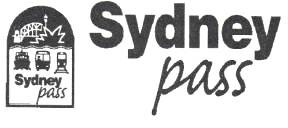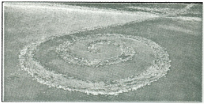题目内容
【题目】
Welcome to the Family Village! We are a global community that integrates information, resources, and communication opportunities on the Internet for persons with cognitive and other disabilities, for their families, and for those that provide their services and support.
Our community includes informational resources on specific diagnoses, communication connections, adaptive products and technology, adaptive recreational activities, education, worship, health issues, disability-related media and literature, and much, much more!
So stop in, stroll around, and visit some of the Family Village's attractions. Simply click on a place to explore and discover a cornucopia of useful information! Let us know what you like or dislike, and visit often, for our village is constantly changing.
The Family Village is generously sponsored by the Waisman Center at the University of Wisconsin - Madison. The Waisman Center is one of nine national facilities that include a Mental Retardation Developmental Disabilities Research Center and a University Center for Excellence in Developmental Disabilities. The Waisman Center is dedicated to the advancement of knowledge about human development, developmental disabilities.
The Family Village has been visited 2140927 times since February 13, 1996. Last updated January 5, 2009 by familyvillage@waisman.wisc.edu. Keywords: cognitive disability, children with disabilities, special health care needs, handicapped, disabled, disability, adaptive equipment, self-help groups, special education.
The Family Village welcomes suggestions and updates from web site visitors. If you know of a resource that should be included in Family Village, please tell us.
http://www.familyvillage.wisc.edu/
【1】What’s the passage mainly about?
A. The history of the Family Village.
B. The origin of the Family Village
C. The function of the Family Village.
D. The introduction of the Family Village.
【2】The Family Village is_________.
A. an organization which can give a hand to people in trouble
B. a community which have many good opportunities to look for jobs
C. a website tells us some miserable stories about ordinary people.
D. a community which can give people some advice for the disabled and their family
【3】What does the underlined word “sponsored” in Paragraph 4 mean?
A. advised B. supported C. suspected D. included
【4】What can we infer from the passage?
A. The Family Village was popular.
B. The Family Village came into being ten years ago.
C. Help provided by the Family village is money.
D. Our village is constantly changing.
【答案】
【1】D
【2】D
【3】B
【4】A
【解析】文章介绍了家庭村的信息。包括它的服务、特点、措施等。
【1】D文章主旨题。文章主要介绍了家庭村的情况,故选D。
【2】D细节理解题。根据文章第一段We are a global community that integrates information, resources, and communication opportunities on the Internet for persons with cognitive and other disabilities, for their families, and for those that provide their services and support. 我们是一个全球性的社区,在互联网上为有认知和其他残疾的人,为他们的家庭,以及为他们提供服务和支持的人提供信息、资源和交流机会。D项符合文意,故选D。
【3】B词义推测题。根据文章第四段The Family Village is generously sponsored by the Waisman Center at the University of Wisconsin - Madison. 这个家庭村庄由威斯康辛大学麦迪逊分校的怀斯曼中心赞助。可知sponsor是“赞助”的意思。故选B。
【4】A推理判断题。根据文章The Family Village has been visited 2140927 times since February 13, 1996自1996年2月13日以来,这个家庭村已被访问2140 927次。可知家庭村很受欢迎。故选A。

【题目】阅读理解
The value-packed, all-inclusive sight-seeing package that combines the best of Sydney's harbour, city, bay and beach highlights.
A SydneyPass gives you unlimited and flexible travel on the Explorer Buses: the 'red' Sydney Explorer shows you around our exciting city sights while the ‘blue' Bondi Explorer visits Sydney Harbour bays and famous beaches. Take to the water on one of three magnificent daily harbour cruises (游船). You can also travel free on regular Sydney Buses, Sydney Ferries or CityRail services (limited area), so you can go to every corner of this beautiful city.
Imagine browsing at Darling Harbour, sampling the famous seafood at Watsons Bay or enjoying the city lights on an evening ferry cruise. The possibilities and plans are endless with a SydneyPass. Wherever you decide to go, remember that bookings are not required on any of our services so tickets are treated on a first in, first seated basis.
SydneyPasses are available for 3, 5 or 7 days for use over a 7-calendar-day period. With a 3 or 5-day pass you choose on which days out of the 7 you want to use it. All SydneyPasses include a free Airport Express inward trip before starting your 3, 5 or 7 days, and the return trip is valid (有效的) for 2 months from the first day your ticket was used.
SydneyPass Fares
Adult | Child* | Family** | |
3-day ticket | $90 | $45 | $225 |
5-day ticket | $120 | $60 | $300 |
7-day ticket | $140 | $70 | $350 |
*A child is defined as anyone from the ages of 4 years to under 16 years. Children under 4 years travel free.
**A family is defined as 2 adults and any number of children from 4 to under 16 years of age from the same family.
(1)A SydneyPass doesn't offer unlimited rides on ________.
A.the Explorer Buses
B.the harbour cruises
C.regular Sydney Buses
D.CityRail services
(2)With a SydneyPass, a traveller can ________.
A.save fares from and to the airport
B.take the Sydney Explorer to beaches
C.enjoy the famous seafood for free
D.reserve seats easily in a restaurant
(3)If 5-day tickets were to be recommended to a mother who travelled with her colleague and her children, aged 3, 6 and 10, what would the lowest cost be?
A.$225.
B.$300.
C.$360.
D.$420.


